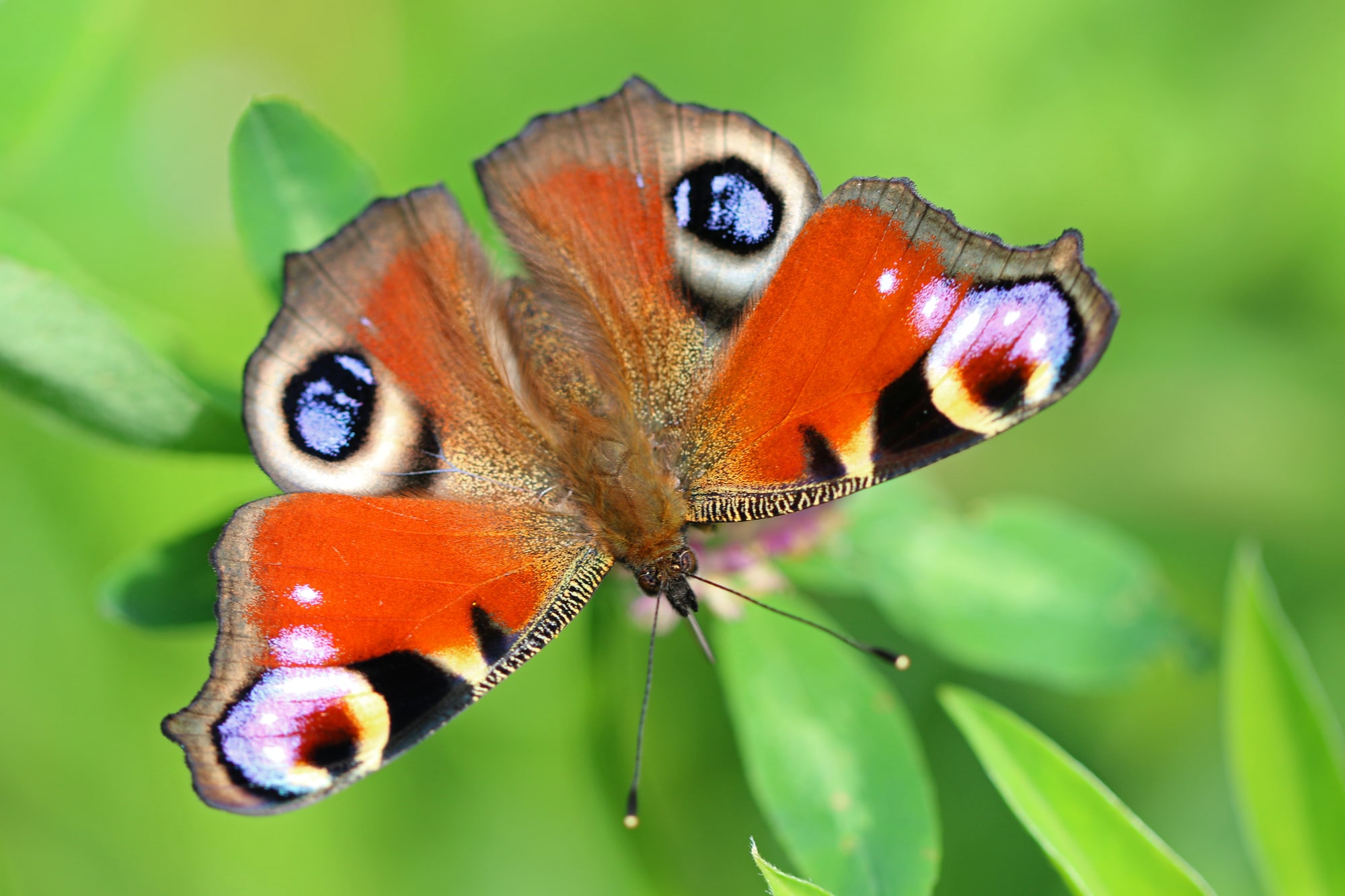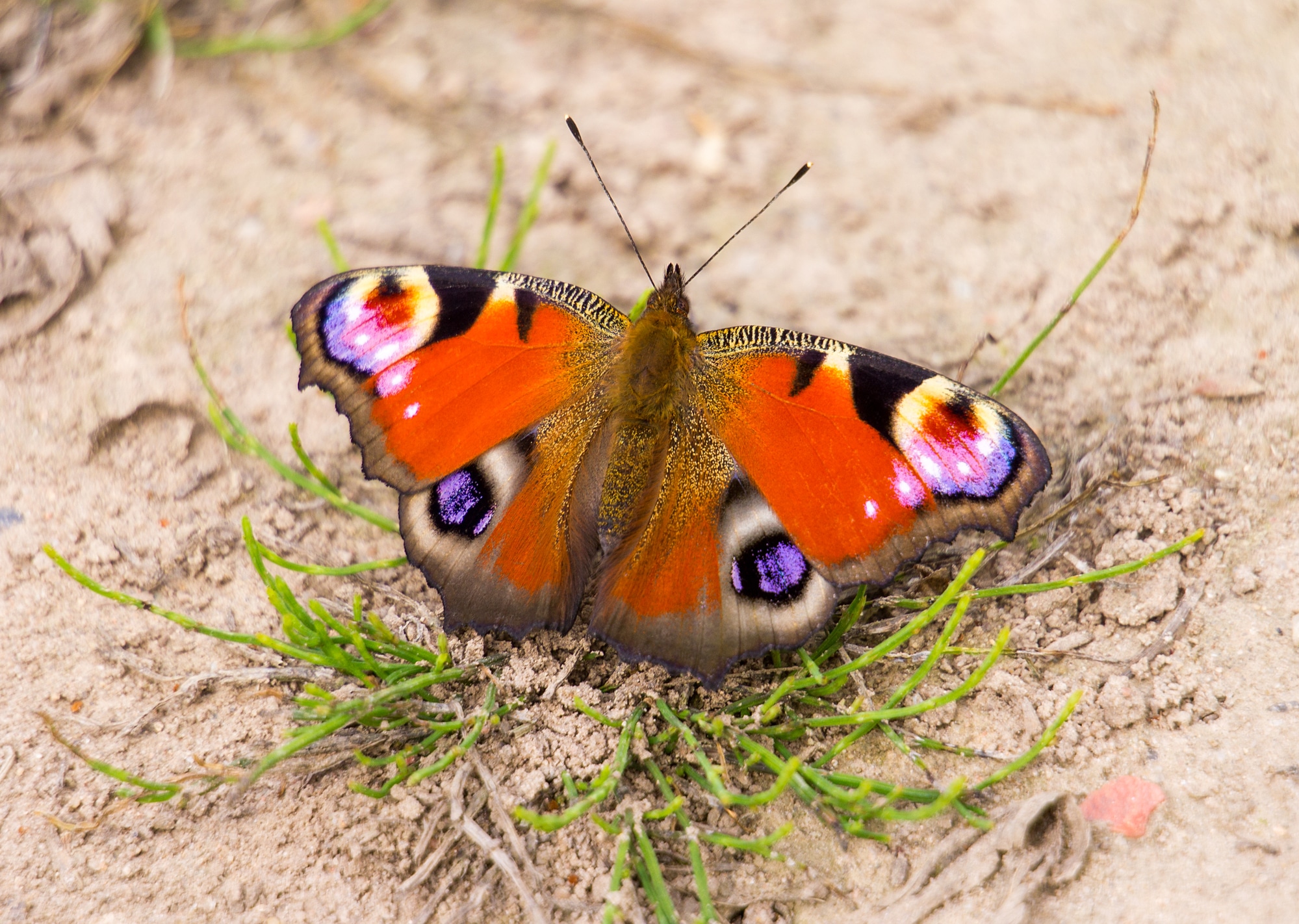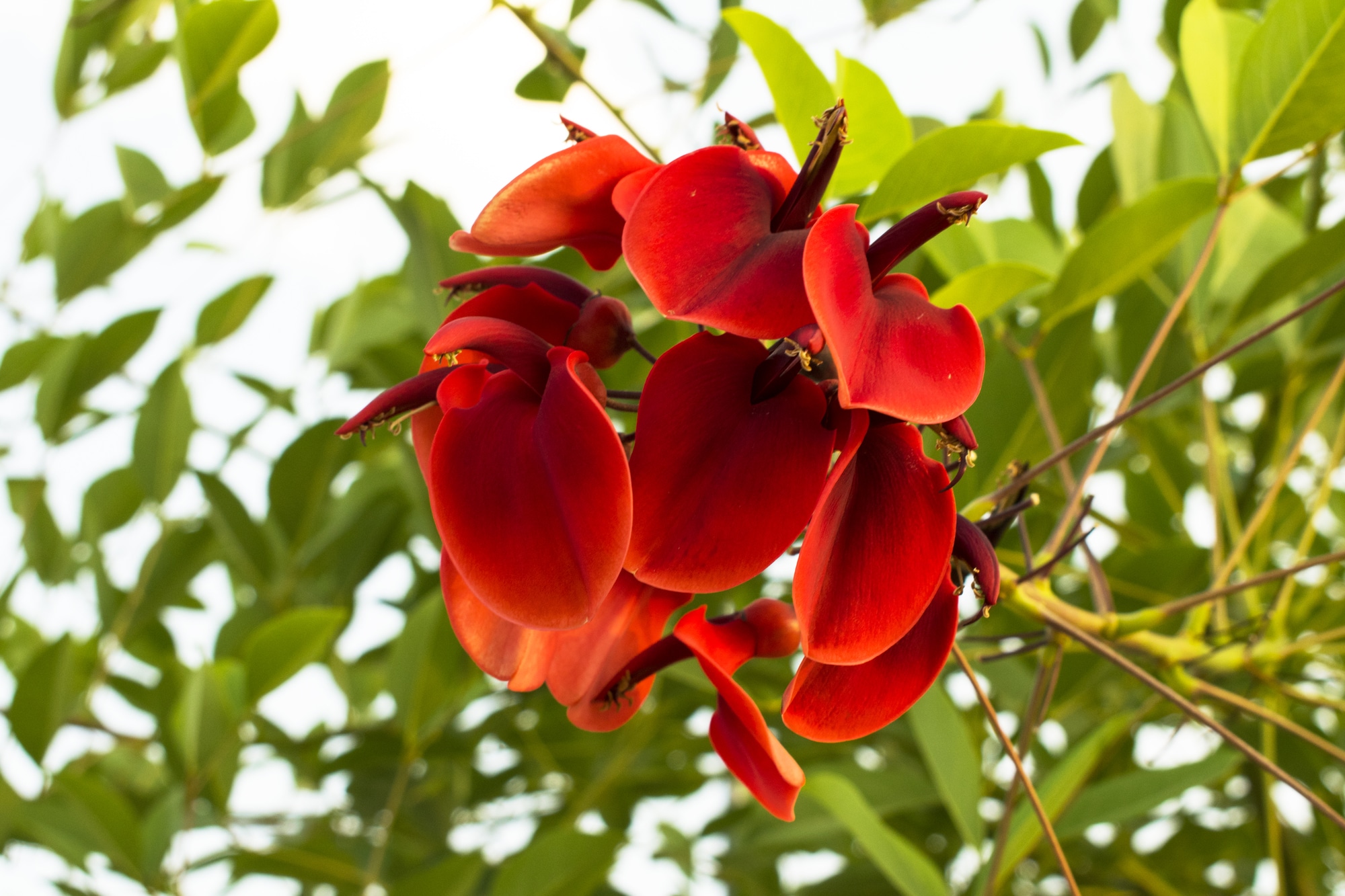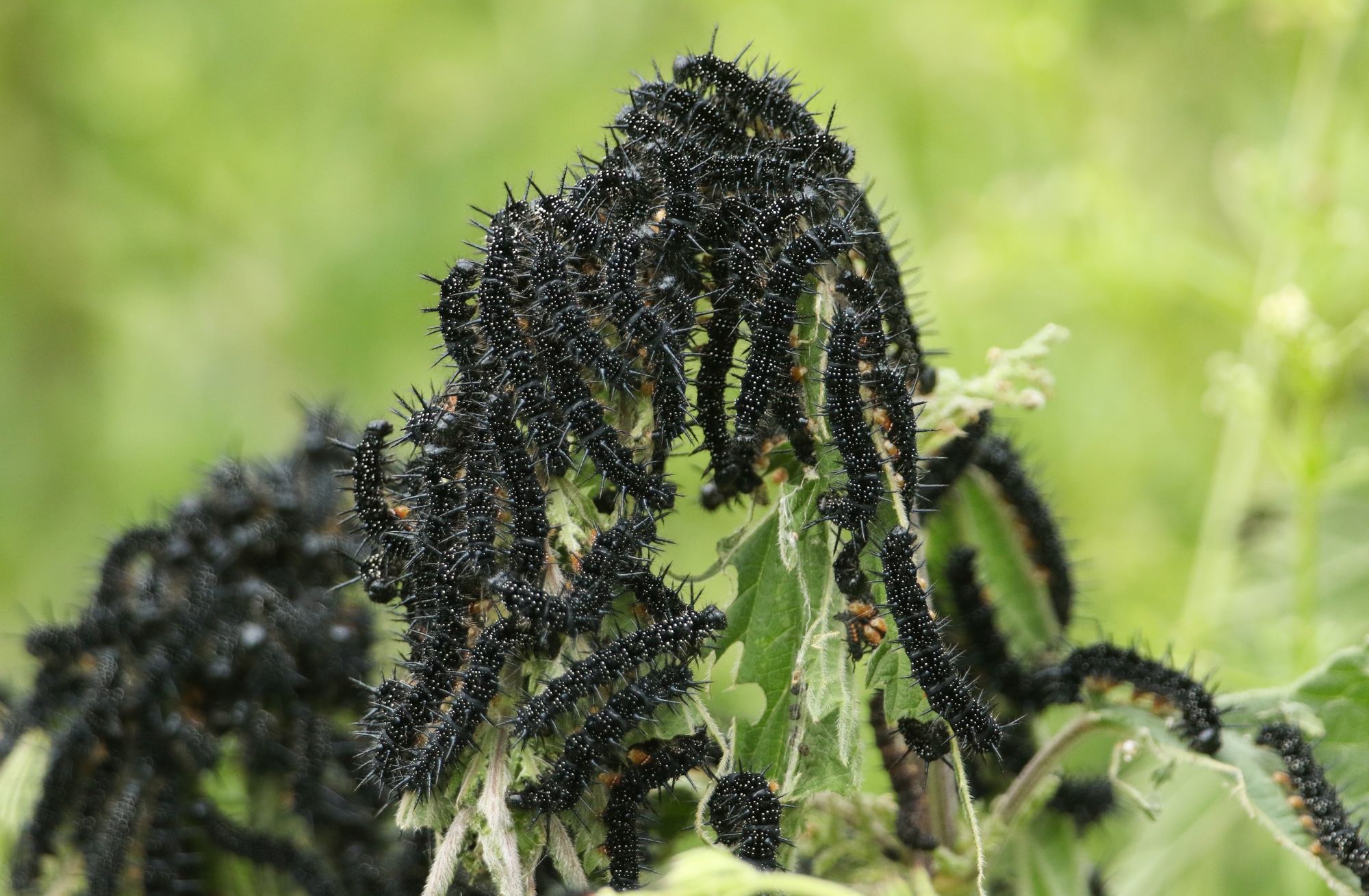Peacock Butterflies are found throughout the world, and are also called Swallowtail Butterflies. The scientific name of these butterflies is Papilio Polytes. There are various meanings that exist as to the spiritual meaning of peacock butterflies:
The peacock butterfly, also known as the peacock parnassian or Five-colored butterfly, is a quintessentially beautiful flying insect. It is found extensively in southwest and south China, including Hong Kong. The male has an iridescent blue head with eyespots and a brown thorax, while the female is brown with dark eyespots on a pale brown/greyish ground color underneath. The scientific name for this species is Troides helena helena.
The peacock butterfly is a symbol of change and transformation.
The butterfly’s life cycle is one of metamorphosis: it starts as an egg, grows into a caterpillar, becomes a pupa, and then emerges as an adult butterfly. Metamorphosis is the process by which an organism changes from one form to another over time.
This process mirrors the spiritual journey we all travel throughout our lives. In this way, the peacock butterfly can be seen as a symbol of self-transformation, where we can learn to let go of old habits or behaviors that no longer serve us in order to grow into our highest potential.
The peacock butterfly is a symbol of pride and joy.
In Hinduism, the peacock is considered a sacred bird. It represents beauty, love, and fertility. The color of its feathers has also been used to represent different things in different cultures; in some places, it’s a sign of royalty or wealth.
In Buddhism, the peacock represents wisdom and knowledge because they are peaceful creatures who are able to fly freely through the sky without fear or worry.

Spiritual Meaning of Peacock Butterfly
Hailing from Argentina and Bolivia, the peacock butterfly (inachis io) is an iridescent jewel of nature. It is the only member of the genus known as Marpesia in the family Nymphalidae, and it’s easy to see why when you take a closer look. Often mistaken for a moth, the peacock butterfly has an opalescent green-blue colour and intricate wing markings. Over the past few centuries, this butterfly has become quite popular as a symbol of celebration.
For example, the American football team the Peacockers were named after this species of butterfly. However, modern-day science would call the peacock butterfly “a spectacular example of how life and evolution can work in wondrous ways”.
In this post, you’ll learn more about the butterfly’s life cycle, mating habits, and how to protect it from its predators. The photos we provide are sure to leave you in awe of this beautiful insect.
1. Transformation and Renewal: Just like the butterfly undergoes a metamorphosis from a caterpillar to a beautiful winged creature, the peacock butterfly symbolizes transformation and renewal in spiritual beliefs. It serves as a reminder that change can lead to growth and new beginnings.
2. Resurrection and Rebirth: In Christian beliefs, the butterfly is often associated with resurrection and rebirth due to its miraculous transformation process. The peacock butterfly embodies this symbolism, representing the cycle of life and the promise of new life after death.
3. Beauty and Grace: The intricate patterns and vibrant colors of the peacock butterfly can be seen as a reflection of divine beauty and grace in the natural world. It serves as a reminder to appreciate the beauty around us and find joy in the little miracles of life.
4. Protection and Guidance: In many cultures, butterflies are believed to be messengers of the spirit world, bringing guidance and protection to those who encounter them. The presence of a peacock butterfly may be seen as a sign that you are being watched over and guided on your spiritual journey.
Biblical Reference:
One Bible verse that can be related to the spiritual symbolism of the peacock butterfly is 2 Corinthians 5:17 – “Therefore, if anyone is in Christ, the new creation has come: The old has gone, the new is here!” This verse speaks to the theme of transformation and renewal, which is symbolized by the butterfly’s metamorphosis.
By exploring the spiritual meanings of the peacock butterfly through biblical references and cultural symbolism, we can gain a deeper appreciation for this magnificent insect and the lessons it can teach us about life and faith. Just as the butterfly emerges from its cocoon to spread its wings and soar, may we too find the courage to embrace change and fulfill our potential in the journey of life.
Peacock Butterfly Identification

The peacock butterfly is so bright, it’s almost impossible to look at without squinting or turning your head, but one thing is for sure — these butterflies are the stuff of dreams, even with their beautiful wings closed.
Fully grown peacock butterflies measure some 2 inches in length with a wingspan of 1.5 inches and are known to fly across South America. But what I find most interesting about the peacock butterfly is that its colours and patterns are completely iridescent, meaning that it can change from an almost colourless state to a blinding display of stunning colours in just one second.
This large butterfly has dark grey, bright blue, and red colours with white dots on its wings and has velvety dark undersides. It has a dagger-shaped jet black mark that runs across its body, making it resemble a peacock’s tail feathers. The coloured bands appear to be slightly darker than the butterfly’s body, so if you look at the butterfly from above, it appears to be a black and white striped pattern.
Peacock Butterfly Characteristics
The peacock butterfly has a few characteristics that set it apart from other butterfly species. For one, they mate only during flight. They are also a migratory butterfly that makes a journey annually from the northern regions of South America to the southern regions. It is believed that adult peacock butterflies travel about 1,800 to 2,000 miles and then makes its way back again in about five months.
Because this butterfly species is migratory, we believe that it has evolved with a few unique characteristics. For example, the peacock butterfly does not have to lay its eggs on tree branches or plant stem (like most butterflies) because it usually resides in open grassy areas where trees are scarce.
Another notable characteristic is its incredible tail-like wings. The wings of this magnificent insect are very different from what we are used to seeing in other butterflies and moths.
The peacock butterfly also has a “false head” on its bottom side (the underwings). This false head is created to trick would-be predators into thinking that the peacock butterfly is just another leaf or flower. Additionally, when threatened, the peacock butterfly makes a hissing sound by rubbing its wings together to deter would-be attackers.
Peacock Butterfly Habitat

The peacock butterfly can be found in many parts of South America, Asia (as far as Japan) and Europe. It is a migratory butterfly, so the peacock butterfly flies away from cold temperatures during the winter and travels to warmer areas. These butterflies are also found in urban gardens and wooded areas of the British Isles.
In these areas, the butterfly is commonly found near gardens because its larva feeds on a plant called “Erythrina,” a small family of flowering trees. However, they are usually found in open grassy areas because these butterflies do not lay their eggs on tree branches or plants like most do.
The caterpillars can be found in the crowns of leaves or on the ground soil. In times of high temperatures, these butterflies prefer to stay on the ground.
Peacock Butterfly Life Cycle
Peacock butterflies have a unique life cycle that includes four stages: egg, larva, pupa (chrysalis), and adult forms. Just like other butterflies, this type begins its life cycle as an egg. The females lay one egg in the most suitable place, for example, on the underside of a nettle leaf, then neatly rolls it up with her mouthparts to protect it from predators. The elderberry tree is one of the common plants that these adult butterflies use as a place to lay their eggs.
The eggs hatch into a larva known as a peacock butterfly caterpillar. Unlike other caterpillars, the peacock caterpillar has a very voracious appetite and can eat up to 80 different plants. And because of its large appetite, the larvae grow to be about 4 inches long and 2 inches wide. This is when the peacock butterfly becomes more vulnerable, so the butterfly has to take further precautions while in this stage of its life cycle.
This is where the “false head” comes in; it disguises itself as an extra leaf that would usually be seen on a plant or flower. This acts as an excellent camouflage for this particular butterfly.
What Is The Diet Of a Peacock Butterfly?

Although it is not known exactly what peacock butterflies eat, since it has a wide range of different plants that they can eat, studies have shown that in most regions of its range, the butterfly feeds on a plant called “Erythrina” which is a small family of flowering trees.
In the butterfly’s natural habitat, it is believed to feed on leaves and flowers from a number of different plants. However, the Erythrina plant is very important for the butterfly because this is where they lay their eggs.
What Do Peacock Caterpillars Eat?
Peacock butterfly caterpillars have an incredibly voracious appetite, and the adults feed on flowers, plants, berries, and other insects. This is because they are omnivores, meaning they can adapt to a wide range of different foods. Fully grown caterpillars can eat up to 50 different items that often include leaves, twigs, roots, and fruits.
It is also believed that the butterfly larvae feed on filamentous algae known as lichens, fungi, and mosses. In one study, peacock butterfly caterpillars were found feeding on 245 different types of plants that made their homes in Erythrina trees.
Does Anything Eat The Peacock Butterfly?
While the peacock butterfly does not have venom, they are not immune to attack. The pupa stage is extremely vulnerable to all kinds of insects, including fireflies and even spiders.
The most common enemy that they face during this time are red jays, an apparently innocent bird that has a voracious appetite for insects. These jays have a fondness of eating the peacock butterfly caterpillar, so much so that they have been known to eat up every last one of them within its territory.
Are Peacock Caterpillars Poisonous?

Peacock butterflies display a remarkable ability to defend themselves, though they do not have any poisonous substance on them. The caterpillar, on the other hand, has a stinging organ which is used to scare away its enemy. The venom, however, is not strong enough to harm humans.
Are Peacock Butterflies Rare?
Previously, these butterflies were seen in large herds and could be found almost anywhere. But today, the peacock butterfly has become rare in some parts of the world because of deforestation and environmental destruction.
The peacock butterfly is also threatened by several types of predators, including birds and insects. Some of the significant hunters include red and blue jays, sparrows, and even the firefly.
The number of peacock butterflies in the wild has been declining since 2010. Luckily, conservationists are working to preserve this butterfly before it’s too late.
Protecting The Peacock Butterfly
The wild nature of the peacock butterfly is something that we need to protect, and there are many ways you can do so.
Because they have become more endangered due to deforestation, local people protect them from their natural predators like snakes and birds by weaving fences around their jungles. As a result, they have started growing more forests, which helps protect this endangered species from extinction.
If you live in Argentina or Bolivia, where this species lives and thrive, it is crucial to go out and plant more Erythrina trees in your neighbourhood so that more butterflies can make their home in your area.